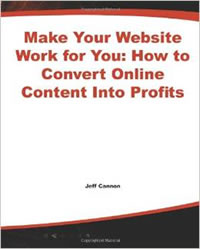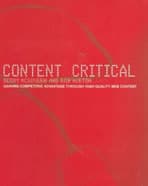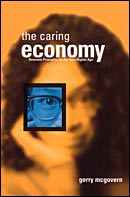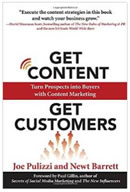Content marketing exists since long before the Internet. However, the roots of modern content marketing can be found in a nexus of forces regarding customer-centric web development, content, publishing, media and usability, at the end of the eighties.
The real boost came at the end of the nineties, when the term ‘content marketing’ was first used. Knowing and understand these roots of today’s (increasingly digital) content marketing will help you see the true power of content marketing (and you’ll have some fun facts to share with friends).
The focus always was customer-centricity
Humans consume understandable content, not networks and databases (Gartner, quoted in a 2001 project, where the intrinsic link between the Web and customer-centered content was expressed).
At the end of the eighties, throughout the nineties and especially in the beginning of the new millenium, different people who were active in several disciplines (from website usability and web content management to digital media and publishing), wanted to improve the way content was used to create better business value and enhance CX in the broadest sense. Web content strategists were – rightfully – obsessed by customer tasks and intent. In the concept and practice of content marketing, these different efforts all came together.
Customer-centricity or customer-centered content was a key priority in many of the evolutions mentioned here.
The term content marketing started popping up in the second half and towards the end of the nineties.

In his book “Make Your Website Work for You: How to Convert Online Content Into Profits“, published on October 1, 1999, Jeff Cannon wrote “in content marketing, content is created to provide consumers with the information they seek”.
That is still a remarkably important and accurate description of a key role of most successful content marketing programs. It also shows how modern thinking and the modern practice of content marketing – just like content strategy, which is not the same as content marketing strategy – has been closely related with the evolutions of the Web.
And it’s again proof of those customer-centric roots of content marketing: provide consumers with the information THEY seek, it could have been written today.
Cannon, who back then was the former head of New Media Marketing for the Los Angeles Times, also defined branded content and explained the how and why of branded content online in the book.
A small quote: “Branded content is not an ad. It is information the consumer wants to receive…Ask any successfull online marketer and they will tell you they are more online publisher than strict advertiser” (Jeff Cannon, 1999).
The strong link between digital, publishing and content marketing
Thinking like publishers: the digital media evolutions
Cannon’s words on online publishing bring us to a second evolution that was going on. Of course, we quickly saw the potential of the Web as a medium to publish (in the true sense of the word). It’s not just thanks to blogs that people became online content creators and some publishers. And, at the same time, there were evolutions in the ways marketers were looking for more measurable ways of doing marketing online, using content and online publishing platforms and media. While custom publishing exists since a long time, marketers – certainly in specific industries such as IT – started to switch from buying ads to buying digital programs, including ads, content formats and demand generation projects.
Forward-thinking and business-minded (digital) publishers also promoted this. It was clear that marketers in industries and companies, which moved first in the digital space, started thinking more like publishers – and that went hand in hand with a changing media landscape – again mainly driven by digital. The famous shift away from a predominantly paid media model could begin.
As one of the key goals in several digital programs was to generate more leads or conversions, the traditional banner already had lost losing some of its’ appeal. Publishers that had a website with their print publications or as stand-alone projects (some publishers started testing publications online first, prior to launch print versions and part 3 of the golden triangle of those days, events) began offering integrated propositions whereby, instead of buying ads, marketers could go for a more integrated approach. A typical example: an advertorial or ad in a magazine, driving awareness about a whitepaper on the website (often written by the publisher for the advertiser), a follow-up event, email campaigns and banners leading to those landing pages on the publisher’s website, etc.
This idea of thinking/acting like publishers was also evoked by web content experts.

In their book “Content Critical: Gaining Competitive Advantage Through High-Quality Web Content“, published in 2001, author Gerry McGovern (who wrote several classics on web content) and co-author Rob Norton had this printed on the backcover: “If part of your job involves writing original content to be placed on the Web – product support material, a marketing pitch, or internal communication – you’re part of a publishing process…It (the book) shows you how to organize a publishing team and how to create a web publishing strategy”. In, fact, chapter one of the book starts with “Everything you know about publishing is wrong”.
Think of your website as a publication and it all begins to make a lot of sense. Think of the person who visits your website as a reader and your objectives become clearer. (Gerry McGovern and Rob Norton in “Content Critical”, 2001)
So, even before blogs started popping up and allowed “everyone” to be a publisher and content creator, what we know as content marketing today – certainly in a digital context – already existed. Cannon wrote about it in 2000 and McGovern mentioned it in his first book, “The Caring Economy”, published in 1999, as well. Below is a quote from that book.
“Yes, if you do it right, the Internet can be a publishing medium for you, and in the digital age, most organisations must become publishers in some form or another. But remember, publishing is a skilled trade. Digital age organisations need to learn that trade. It’s not easy, or cheap. (Gerry McGovern, The caring economy – business principles for the new digital age, June 1999).

McGovern, Cannon and many others we forget, including those evoking the same thoughts, principles and practices (and applying them online) and the many online publishers and Web pioneers, were the frontrunners and their books today still read as if they could be published right now (and become bestsellers) in many aspects, from community marketing and content marketing to customer experiences and back. The same goes for classics about content strategy (not content marketing strategy) by the way but that’s for another time and place. And the same also applies to social media and social business as you can read here.
The reasons we emphasize the “Internet-related” origins of all these ideas about content and publishing:
- it shows the transformational power Internet had/has
- it helps you cut through the current hype when knowing your classics (or discovering them if you’re relatively new to all this)
- well, credit where credit is due – and that includes the mentioned authors but most of all the Web
- there is far more to learn from – even recent – history than many think
- most content marketing will be online anyway
How content marketing connected the dots (and the people)
Nevertheless, the term content marketing and the “brands as publishers idea” mainly became popular when it was coined and evangelized in the US – and later also in other regions – many years later by someone with a custom publishing background: Joe Pulizzi, who had elaborated on that old idea of online publishers and Web marketers that brands would think more like publishers and made it the very essence of his content marketing message.

Joe tried to coin several terms to describe all these evolutions, as he told us, and content marketing just seemed to resonate best. Joe published his first book on the topic, together with Newt Barrett, in 2009. It was called “Get Content Get Customers: Turn Prospects into Buyers with Content Marketing”.
Joe of course wasn’t the only one either. Robert Rose, Joe’s partner, about those days in an interview: “I met Joe way back in 2008, and he and I hit it off immediately. We were both talking about content marketing – and specifically the approach of it – but from two different lenses. He was talking from the publisher’s point of view – and I from the brand marketer’s point of view”.
There are all kinds of definitions of great content. However, if we think about it from an engagement standpoint, great content is information that makes people take an action.
Today, Joe’s work and that of many others, de facto also mainly relates to digital content marketing, even if print, to name just one, remains important. It’s not a coiincidence that, when Joe started talking about content marketing, we got in touch, did a round table together and helped launch the European version of Chief Content Officer, the magazine of Joe and Robert.
And it’s also not a coiincidence we got in touch with people like Gerry McGovern, Mr. ‘customer top tasks‘ (the concept of customer tasks originates in usability, web content, online experiences, etc., Gerry took it far and far further) among others for the events we organized.
After all, content marketing, or at least the desire to be more strategic and relevant about content was an evolution happening across the globe, even in times when this globe was far less “connected” (no blogs, no LinkedIn, no social networks in the early nineties, let alone decent email).

